An Omega Man SMG? The M76 9mm
March 10th, 2022
6 minute read
Robert Neville pulled his sparkling new 1970 Ford XL convertible onto the deserted LA boulevard and pressed the accelerator to the floor. The V8 engine pushed the powerful car past 100 miles per hour by the end of the block. The weather was nice, and it was time to do some clothes shopping.
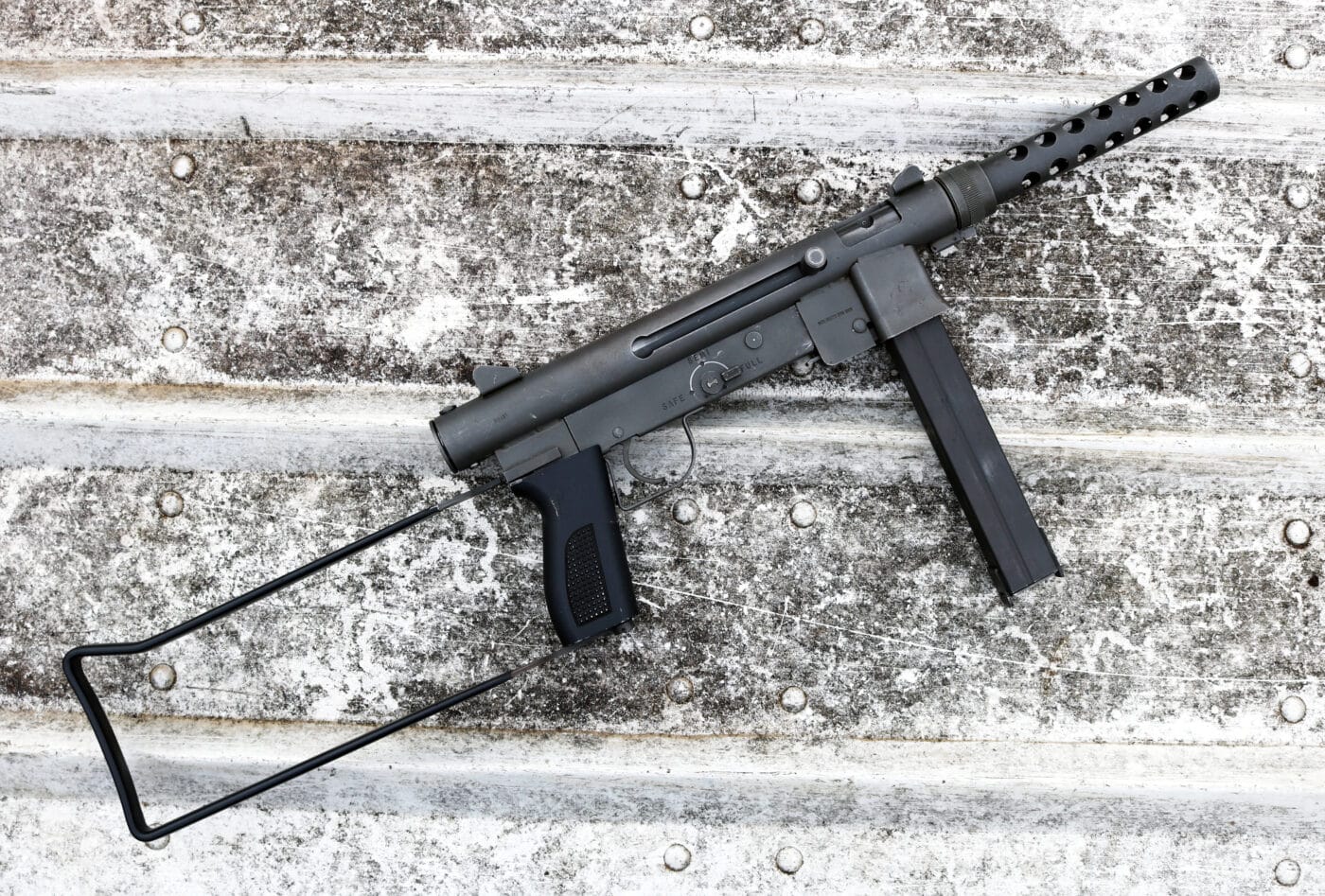
Neville knew of a high-end boutique a few miles from his fortified high rise that he had not yet explored. He jumped the curb and slid the convertible to a stop in front of the entrance, scraping the undercarriage mercilessly on the concrete. As he threw himself over the closed car door he grabbed his M76 submachine gun and made a mental note to pick up another car.
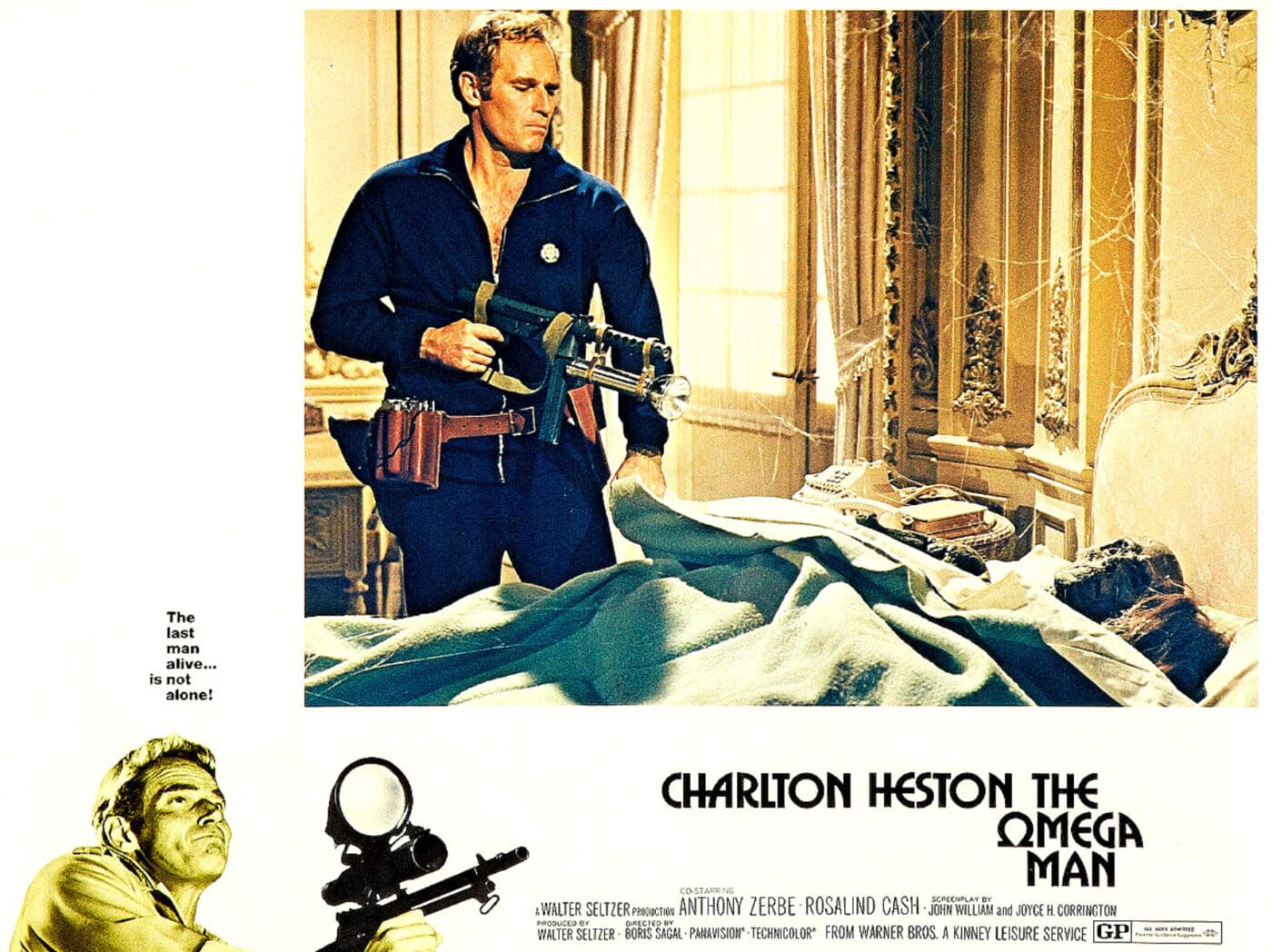
Neville affixed a silver D-cell flashlight underneath the ventilated barrel shroud of the gun and shoved himself bodily through the front door now stiff with disuse. He glanced at his watch. He had about two hours until the sun went down and he had to be back home. Two hours to pick out something comfortable and nice. Slinging the gun over his shoulder he began tossing sports shirts onto the floor until he found his size. Another dozen of these should do nicely.
To the Monsters, We’re the Monsters
The 1971 post-apocalyptic movie The Omega Man was an instant action classic. The second of three film adaptations of the 1954 Richard Matheson novel I Am Legend, The Omega Man posited what life might be like for an Army physician who has the world to himself. Vincent Price’s 1964 Last Man on Earth and Will Smith’s 2007 epic I Am Legend also drew from the same source material. The Omega Man introduced moviegoing audiences to a variety of fresh new concepts.
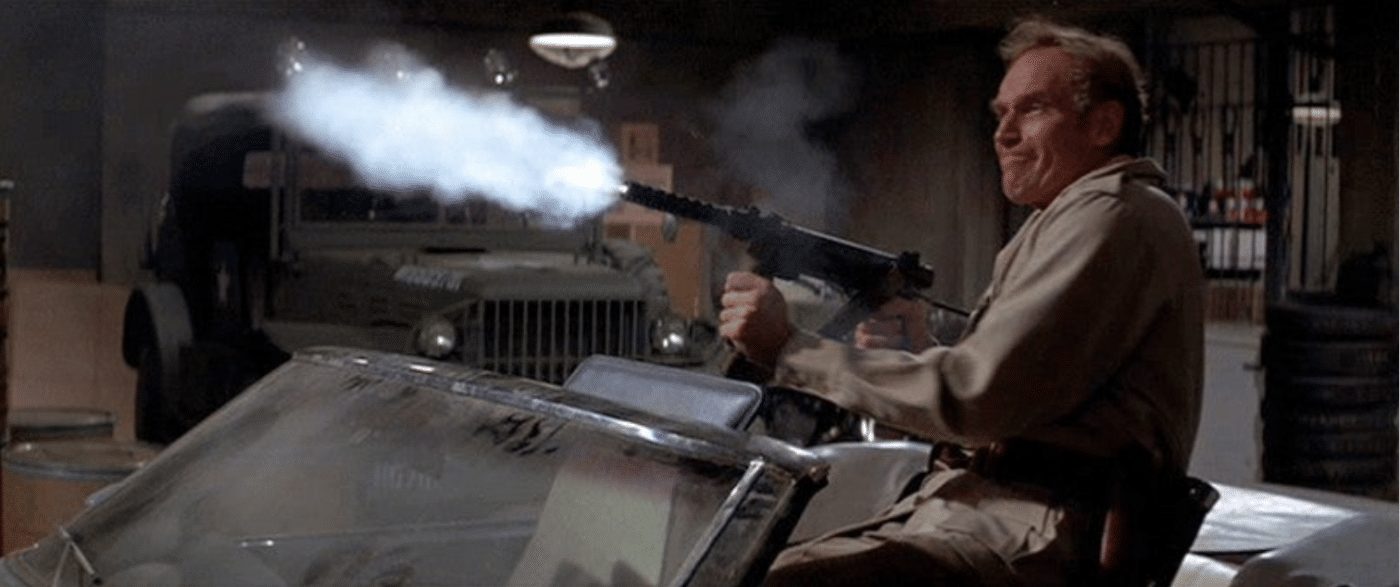
There were no digital graphics in 1971, so everything had to be staged and shot in the real world. The filmmakers, therefore, captured most of the sweeping deserted Los Angeles vistas early on Sunday mornings when traffic was minimal. Americans actually took Sundays off back then, though the sharp eye will still catch the occasional passing car or pedestrian in the background. Regardless, the effect was nonetheless incredibly cool. The obligatory light-averse zombies in the film were pretty neat as well. Another first for The Omega Man was the M76 9mm submachine gun.
The Right Gun at the Wrong Time
As America was drawn deeper and deeper into the Vietnam War, it became obvious that Navy SEALs, CIA operators and Special Forces troops would benefit from a handy, lightweight 9mm submachine gun. In the years following World War II, the planet seemed to be covered in a thin patina of such weapons, but by the 1960s the pickings were a bit slim. The SEALs settled on the Swedish Carl Gustav m/45 or Swedish K. Troops in country affectionately referred to the gun as the K Rifle.
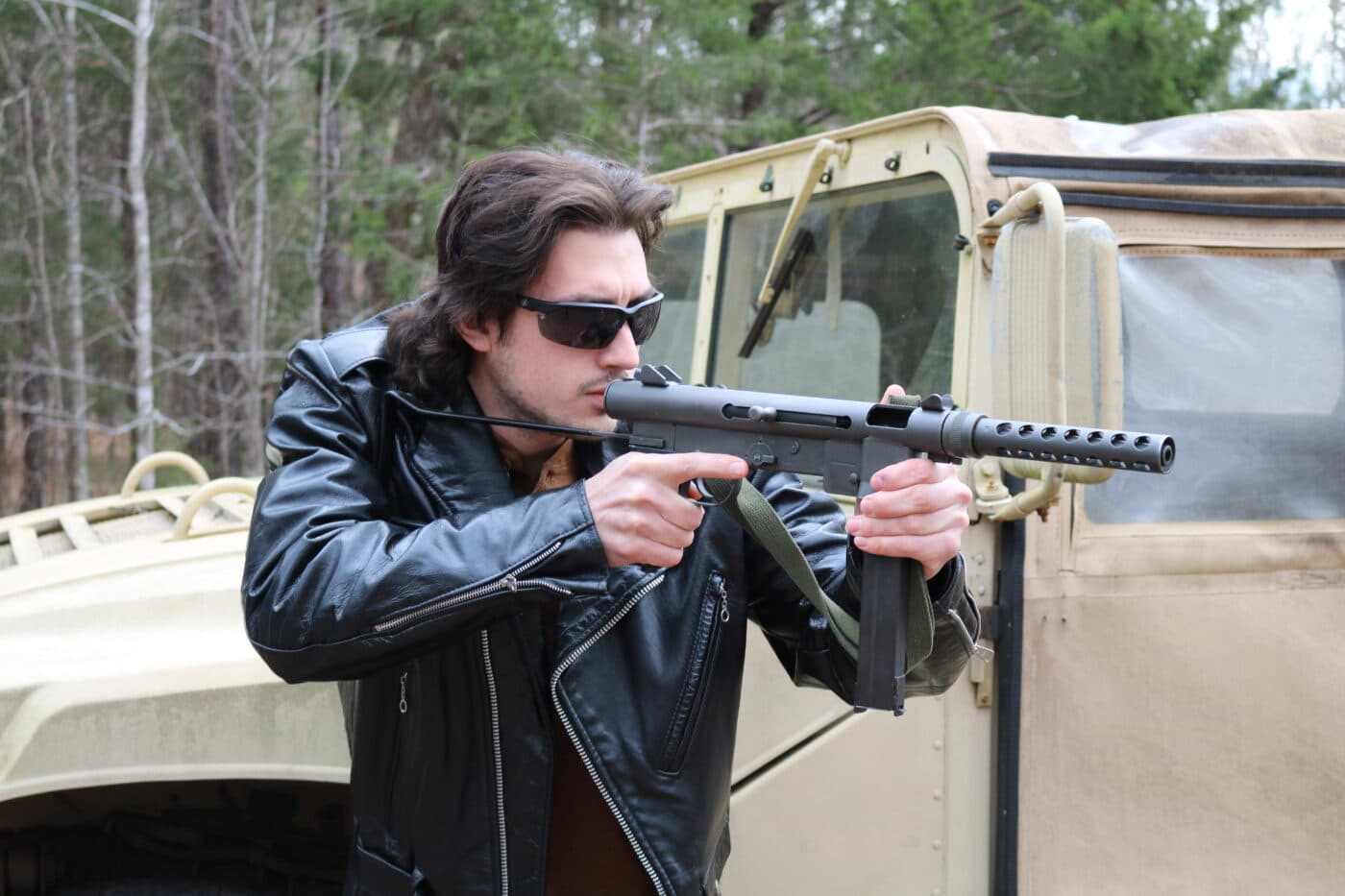
The K Rifle has developed a reputation that is really beyond its capabilities. It was indeed reliable and controllable in the extreme. The 36-round magazine was easy to manage, and there was little on the gun to break. However, the design was fairly uninspired.
The Swedish K was full-auto only and fired from the open bolt via simple unlocked blowback. The gun readily accepted a sound suppressor and impressed unconventional warfare operators with its reliability and close-range firepower. However, by the mid-60s, officially neutral Sweden voiced its displeasure with the American military adventures in Southeast Asia. This resulted in an arms embargo that dried up the supply of K Rifles (to learn more about this, click here).
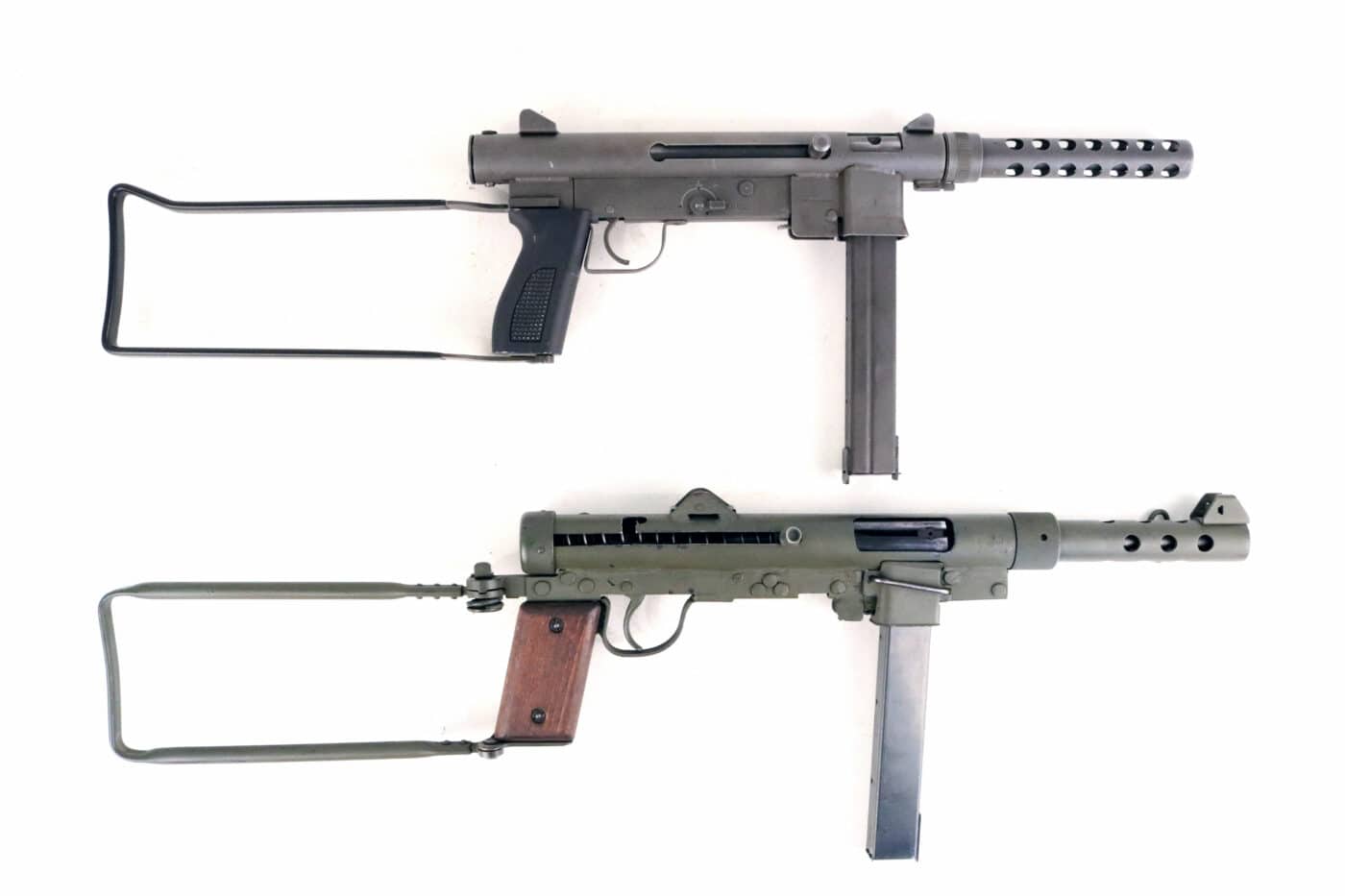
The Navy contracted for a domestic replacement that would not be subject to international embargoes. Development began in the spring of 1966 with operational versions ready for issue a mere nine months later. While a serviceable enough weapon, the U.S.-made M76 just didn’t strike the same chord that the Swedish K had.
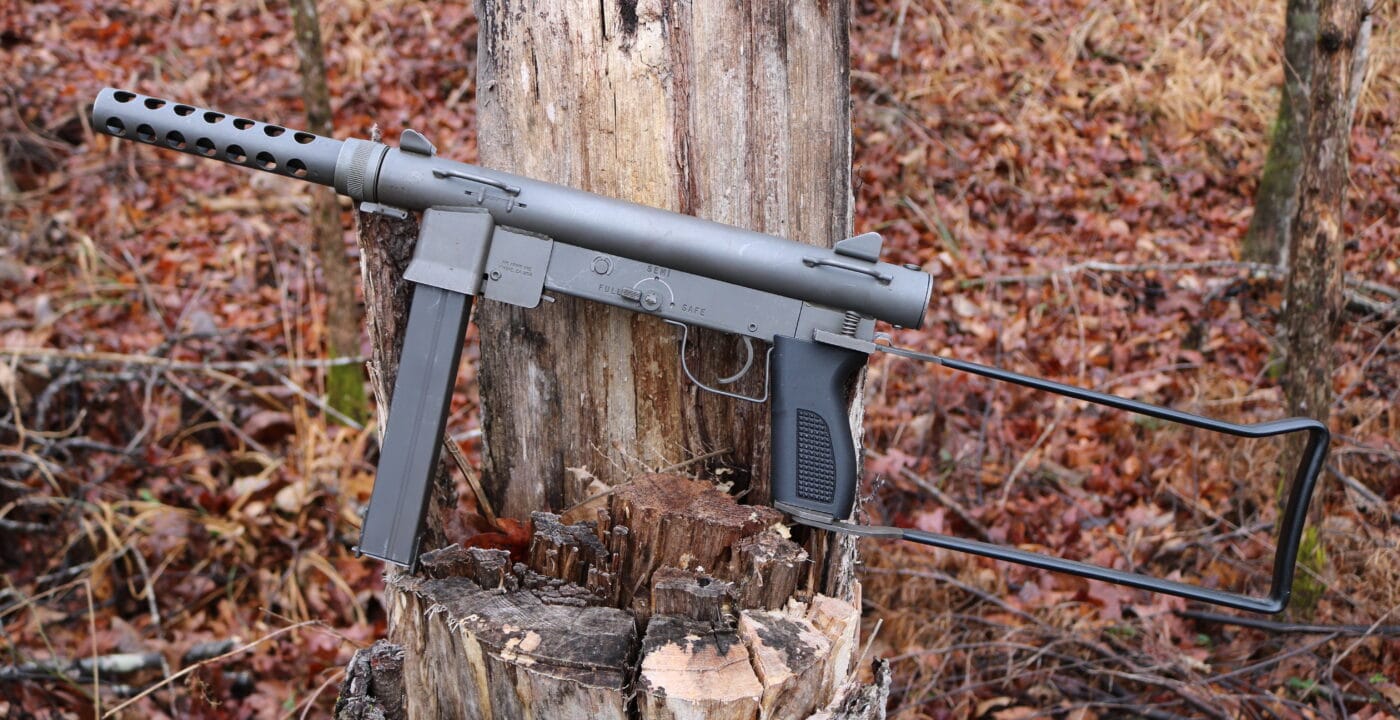
Some have implied that the M76 was a copy of the Swedish K. This is demonstrably false. To my knowledge, little beyond the magazines are interchangeable between the two weapons. The side-folding stock on the Swedish K was robust and rigid, while that of the M76 was a bit flimsy and insubstantial. Both guns ran about the same, but the Swedish K was a much more rugged design. The guys who originally crafted the M76 later claimed they had never before seen, handled, or fired a K Rifle.
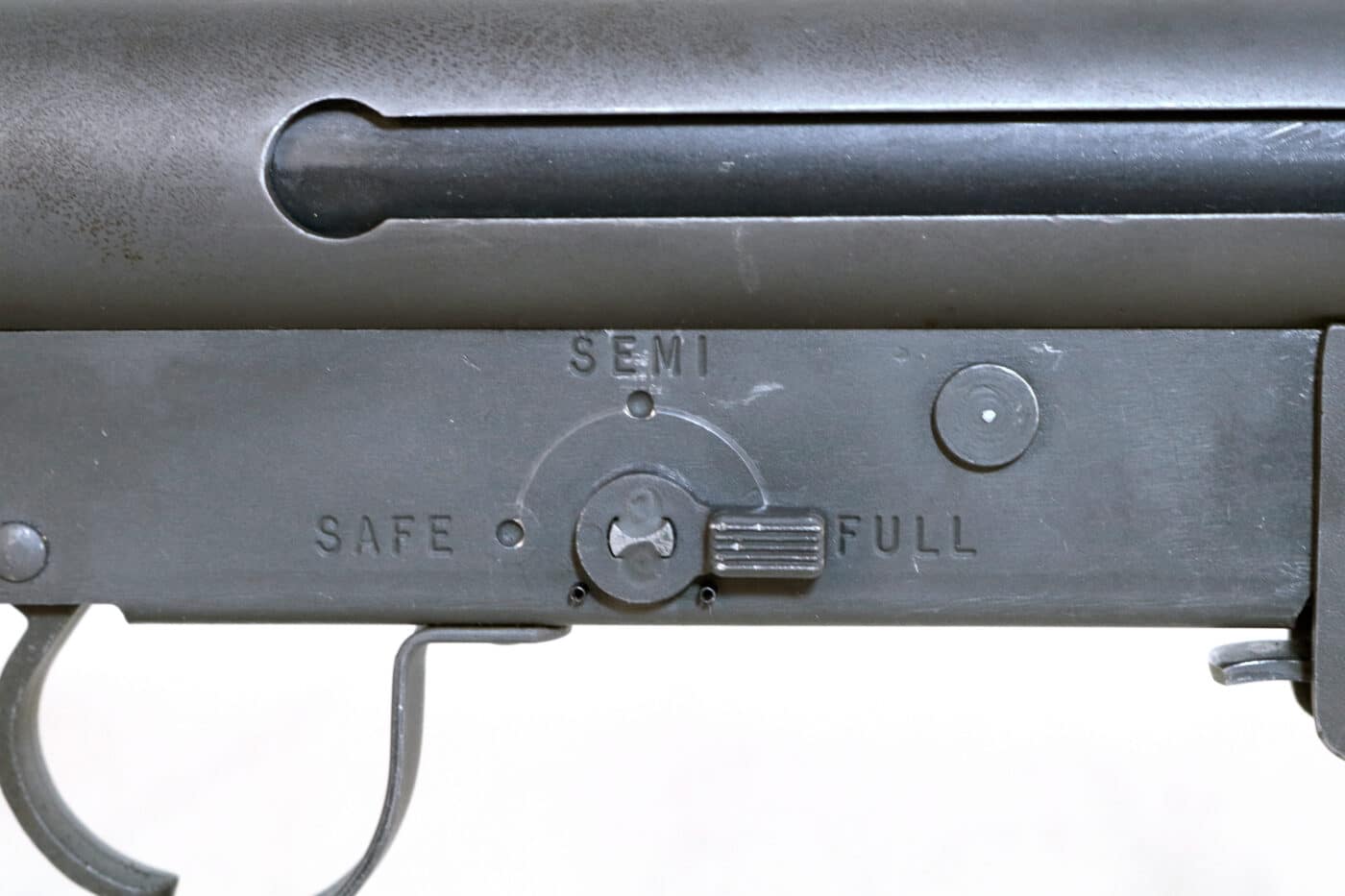
The ventilated barrel shroud on the M76 threaded off to allow easy access to the barrel. Unlike the K Rifle, the M76 was a selective-fire weapon via a rotating selector lever. The magazine release was a thumb lever located along the midline behind the magazine well. There was even a prototype version that fired electrically primed caseless 9mm ammunition.
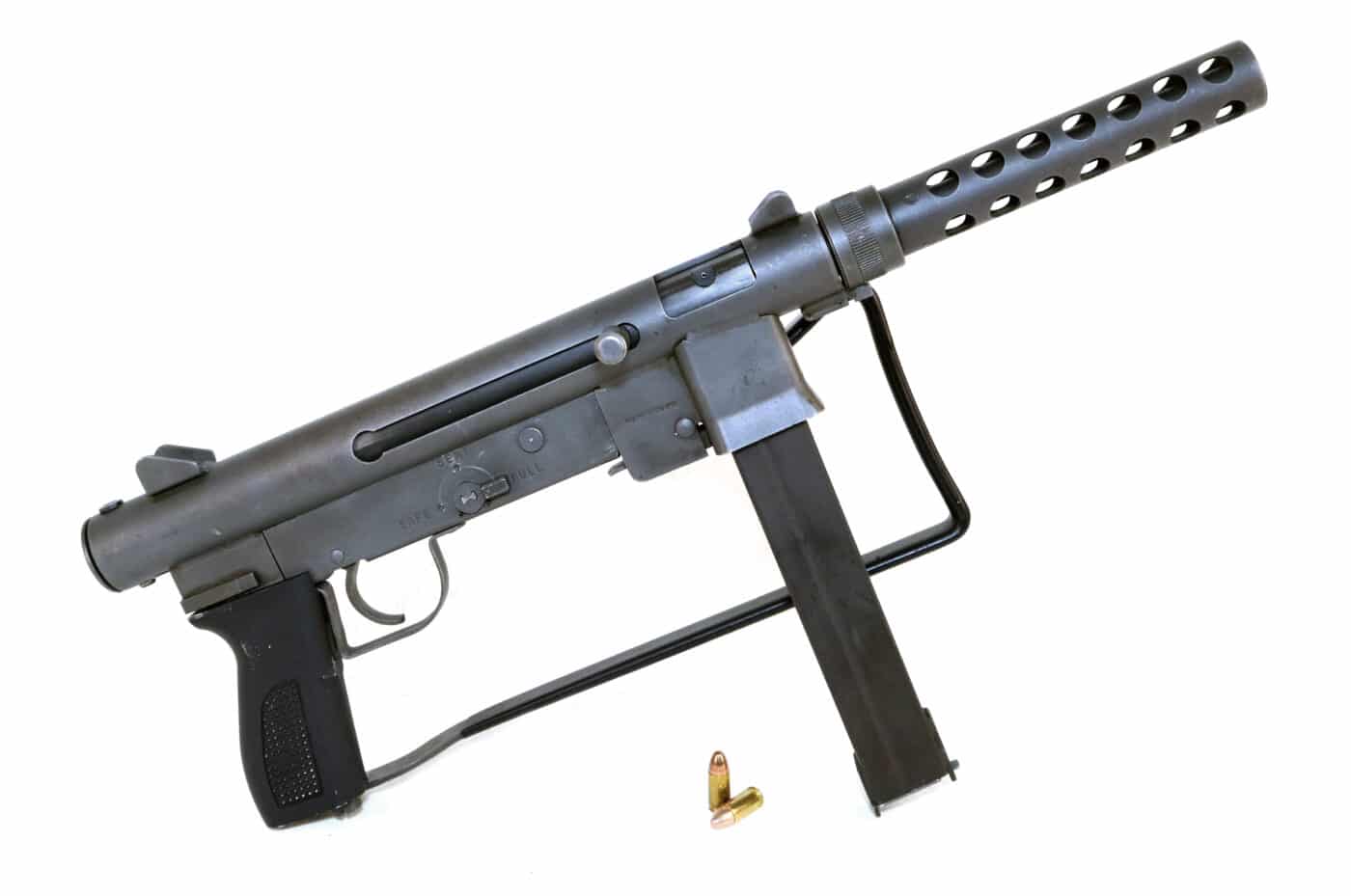
Practical Tactical
The manual of arms on the M76 is fairly stupid-proof. Retract the bolt until the sear locks it to the rear. Slap a loaded magazine in place, point the gun and squeeze the trigger. The trigger pull is a fairly atrocious 10 lbs. pounds or more on most of the guns I have fired.
With a cyclic rate of 720 rounds per minute, the M76 remains quite controllable. Magazine changes don’t take a great deal of talent, and the gun exhibits reliability typical of its genre. Overall it’s a fun gun on the range.
Ruminations
About the time the M76 came online, U.S. troops were developing an affection for stubby rifle-caliber carbines, and the market evaporated. Production wrapped up in 1974 with a few guns seeing action in Vietnam and a smattering sold to U.S. law enforcement agencies. While the M76 eventually got some fairly significant big screen time in movies like Magnum Force, Black Sunday and The Dark Knight, it all started with The Omega Man.
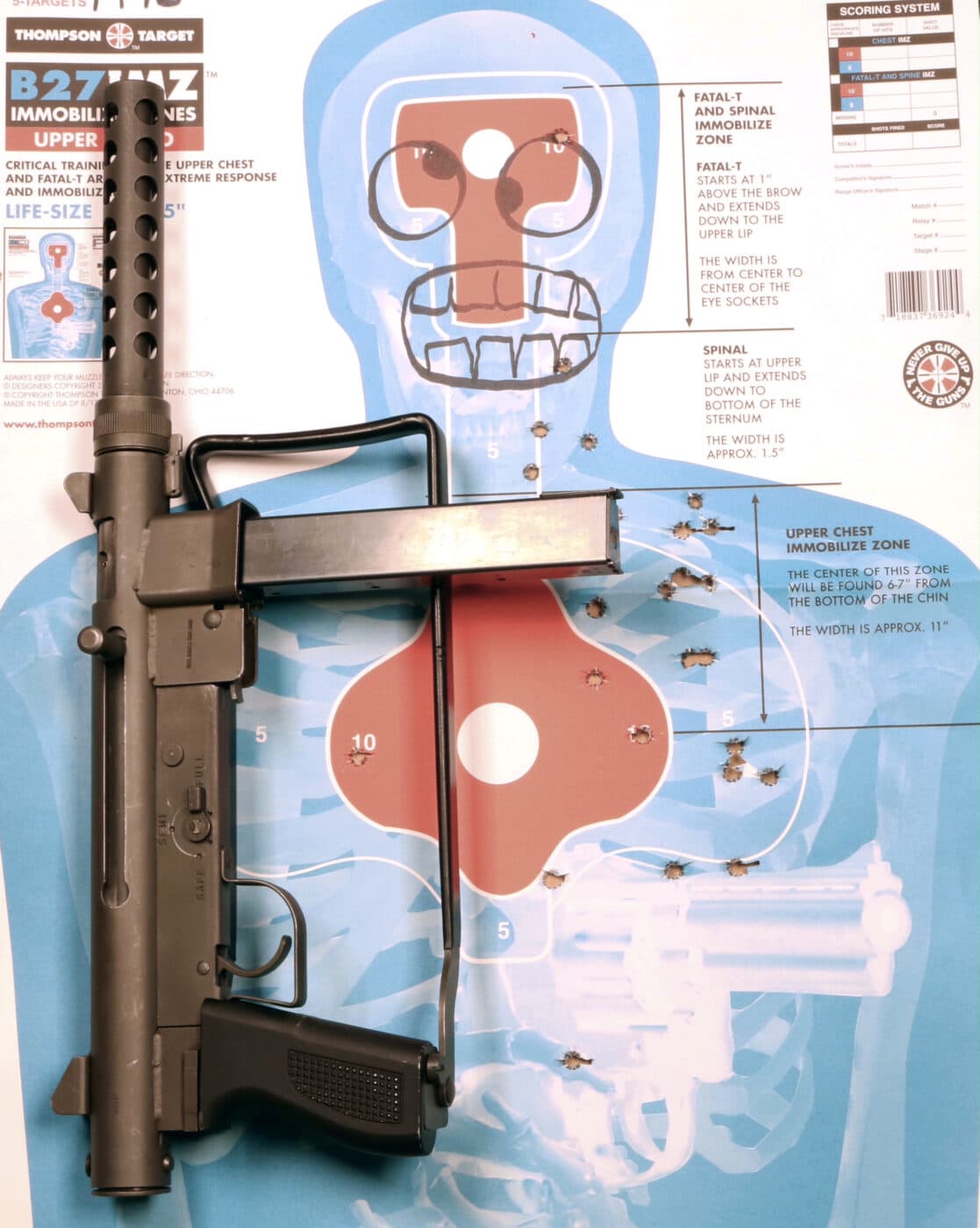
Inexpensive, reliable, and effective, the M76 would have changed the world had it been introduced in 1941 as one of the submachine guns of World War II. A quarter-century later it was really too little too late. For a go-to gun to get a guy through the zombie apocalypse, however, the M76 was tough to beat.
Editor’s Note: Please be sure to check out The Armory Life Forum, where you can comment about our daily articles, as well as just talk guns and gear. Click the “Go To Forum Thread” link below to jump in!
Join the Discussion
Continue Reading
Did you enjoy this article?

 278
278





